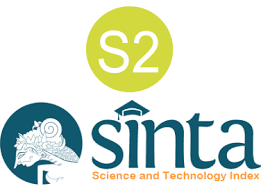Kejahatan Transnasional Terorganisir di Wilayah Perbatasan: Studi Modus Operandi Penyelundupan Narkotika Riau dan Malaysia
Abstract
The transformation of issues in international politics has led to a shift from traditional security issues (war and military) to non-traditional security issues (human security). One form of non-traditional security threat is the transnational crime activity of narcotics smuggling in Southeast Asia. The Southeast Asian region has an area of around 4.4 million KM2 and is known as the "Golden Triangle" narcotics production area on the border of Thailand, Laos, and Myanmar. One of the destination countries for smuggling narcotics in the Southeast Asian region is Indonesia and Riau Province is one of the gateways for the illegal entry of narcotics from other countries, especially Malaysia. This paper aims to analyze the modus operandi of transnational crime in narcotics smuggling in the border regions of Riau and Malaysia. This paper uses a qualitative method using interviews with research informants. The results of this study indicate that the modus operandi of narcotics smuggling in the border regions of Indonesia and Malaysia is carried out by sea along the coastline of the border provinces of Riau and Malaysia. Narcotics are neatly wrapped and installed GPS devices then smuggled at night by using the services of fishermen as a courier. This seawater smuggling route was chosen due to several factors, namely: the proximity of the territorial waters, the number of unofficial or illegal ports, the lack of surveillance patrols along the water area and the professionalism of law enforcement officers in the border region.
The transformation of issues in international politics has led to a shift from traditional security issues (war and military) to non-traditional security issues (human security). One form of non-traditional security threat is the transnational crime activity of narcotics smuggling in Southeast Asia. The Southeast Asian region has an area of around 4.4 million KM2 and is known as the "Golden Triangle" narcotics production area on the border of Thailand, Laos, and Myanmar. One of the destination countries for smuggling narcotics in the Southeast Asian region is Indonesia and Riau Province is one of the gateways for the illegal entry of narcotics from other countries, especially Malaysia. This paper aims to analyze the modus operandi of transnational crime in narcotics smuggling in the border regions of Riau and Malaysia. This paper uses a qualitative method using interviews with research informants. The results of this study indicate that the modus operandi of narcotics smuggling in the border regions of Indonesia and Malaysia is carried out by sea along the coastline of the border provinces of Riau and Malaysia. Narcotics are neatly wrapped and installed GPS devices then smuggled at night by using the services of fishermen as a courier. This seawater smuggling route was chosen due to several factors, namely: the proximity of the territorial waters, the number of unofficial or illegal ports, the lack of surveillance patrols along the water area and the professionalism of law enforcement officers in the border region.
Full Text:
PDFReferences
Buku
C. A. Trocki. 1999. Opium, empire and the global political economy: A study of the Asian opium trade. New York: Routledge.
Edwards Adam and Peter Gill. 2003. Transnational OrganisedCrime Perspectives on global security London. Routledge.
Hermawan, Yulius. 2007. Transformasi Isu dan Aktor di dalam Studi Hubungan Internasional: dari Realisme hingga Konstruktivisme”. Yogyakarta: Graha Ilmu.
Karns, Margaret P. & Mingst, Karen A. 2004. The Search of Peace and Security. Dalam International Organizations: The Politics and Process of Global Governance. London: Lynne Riener Publisher, Inc.
M. P. McCarthy Dennis. 2001. An Economic History of Organized CrimeA national and transnational approach. New York. Routledge.
Mahbubany Kishore and Jeffery. 2017. ASEAN Miracle. Singapore. NUS Press.
Moleong, Lexi J. 2000. Metode Penelitian Kualitatif. Bandung. Remaja Rosdakarya.
Othman, Zarina. 2004. Myanmar. Illicit Drugs Trafficking and Security Implication, Jakarta. Akademika.
Jurnal
Fabira, Elfira. Upaya ASEAN dalam Menanggulangi Perdagangan dan Peredaran Narkotika Ilegal di Kawasan Asia Tenggara (2009-2012). Jurnal Ilmu Hubungan Internasional Unmul.org. No 2 Vol 3 tahun 2014.
L. Tobing, Fredy B. Aktifitas Drugs Trafficking Sebagai Isu Keamanan yang Mengancam Stabilitas Negara, dalam Jurnal Politik Internasional, Vol 5 No 1 November 2002.
Naylor, “From Cold War to Crime War: The Search for a New National SecurityThreat,” Transnational Organized Crime1, no. 4 (Winter) 1995.
Victor Muhammad, Simela. Diplomasi Anti Narkoba. Jurnal Hubungan Internasional. Kajian Singkat terhadap Isu Aktual dan Strategis. Vol. VII, No.05 / I / P 3DI/Maret 2015.
Laporan
ASEAN – Narcothics Cooperation Center. 2015. ASEAN Drug Monitorning Report. Thailand. ASEAN NARCO.
Direktorat Reserse dan Narkotika Kepolisian Negara Republik Indonesia Daerah Riau. 2017. Paparan Kapolda Riau mengenai Kejahatan Transnasional Narkotika di Provinsi Riau. Pekanbaru. Seminar Nasional Universitas Riau.
Website
http//www.UNODC.org. 2015. Report of the Years. Publisher.
http//www.unodc.org. Illicit Drugs in World System.
http://www.asean.org/communities/asean-political-security-community/item/asean-declaration-on-transnational-crime-manila-20-december-1997
http://www.asean.org/news/asean-secretariat-news/item/asean-reaffirmed commitment towards-drug-free-vision
Transnational crime in the 21st century. (2005, January 1). Handbook of Transnational Crime and Justice, 43–46. https://doi.org/10.4135/9781412976183
Refbacks
- There are currently no refbacks.










